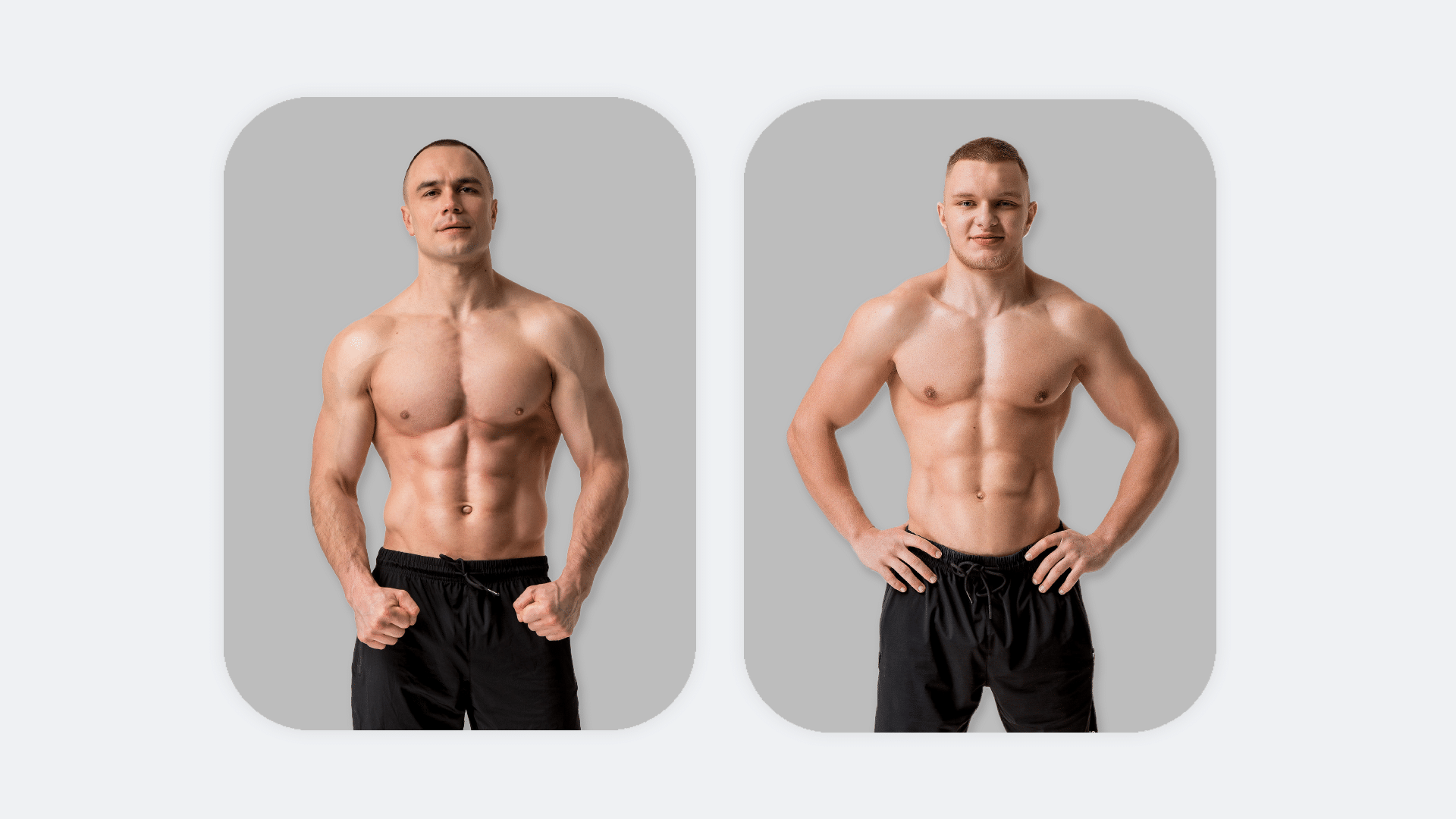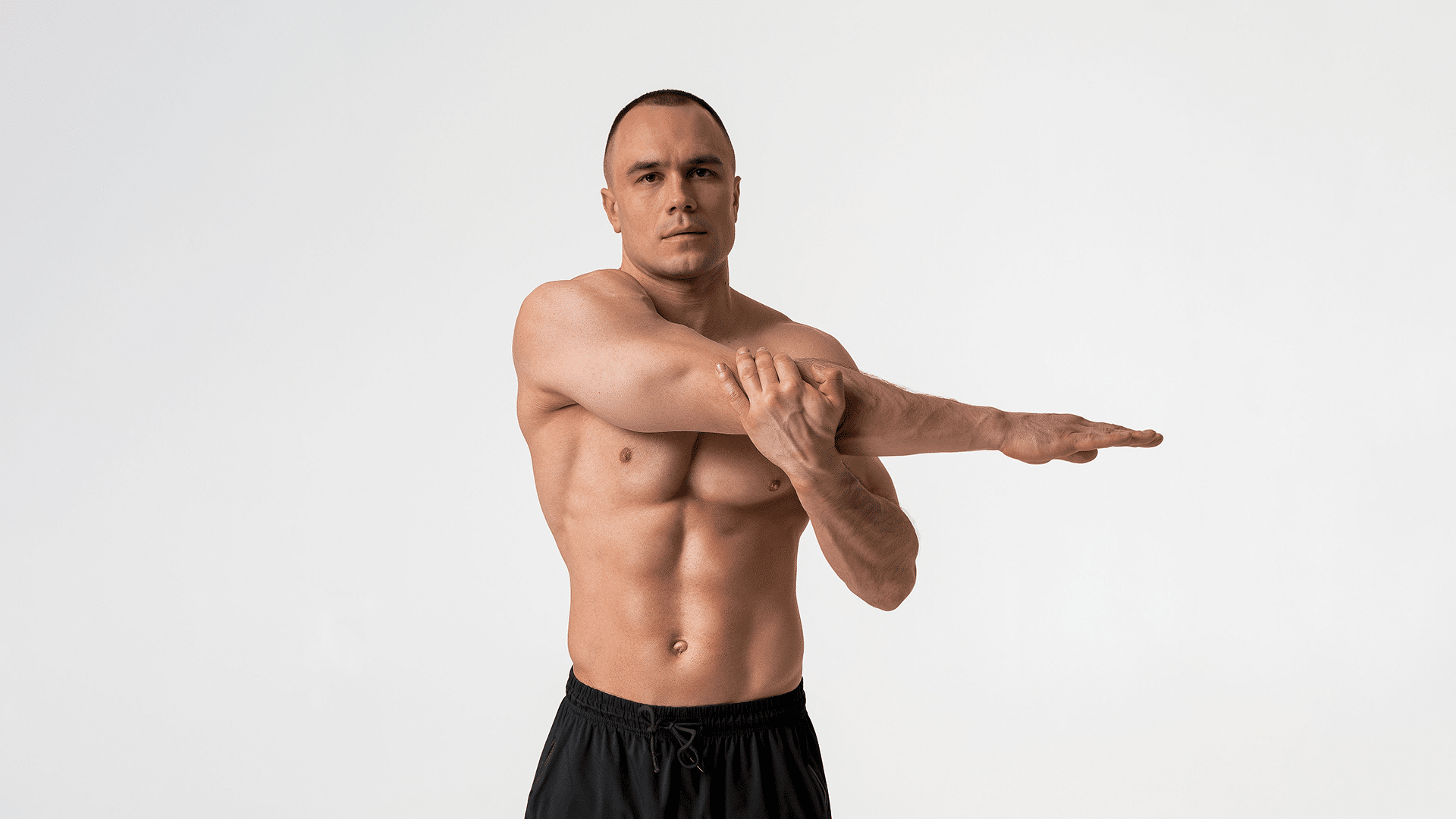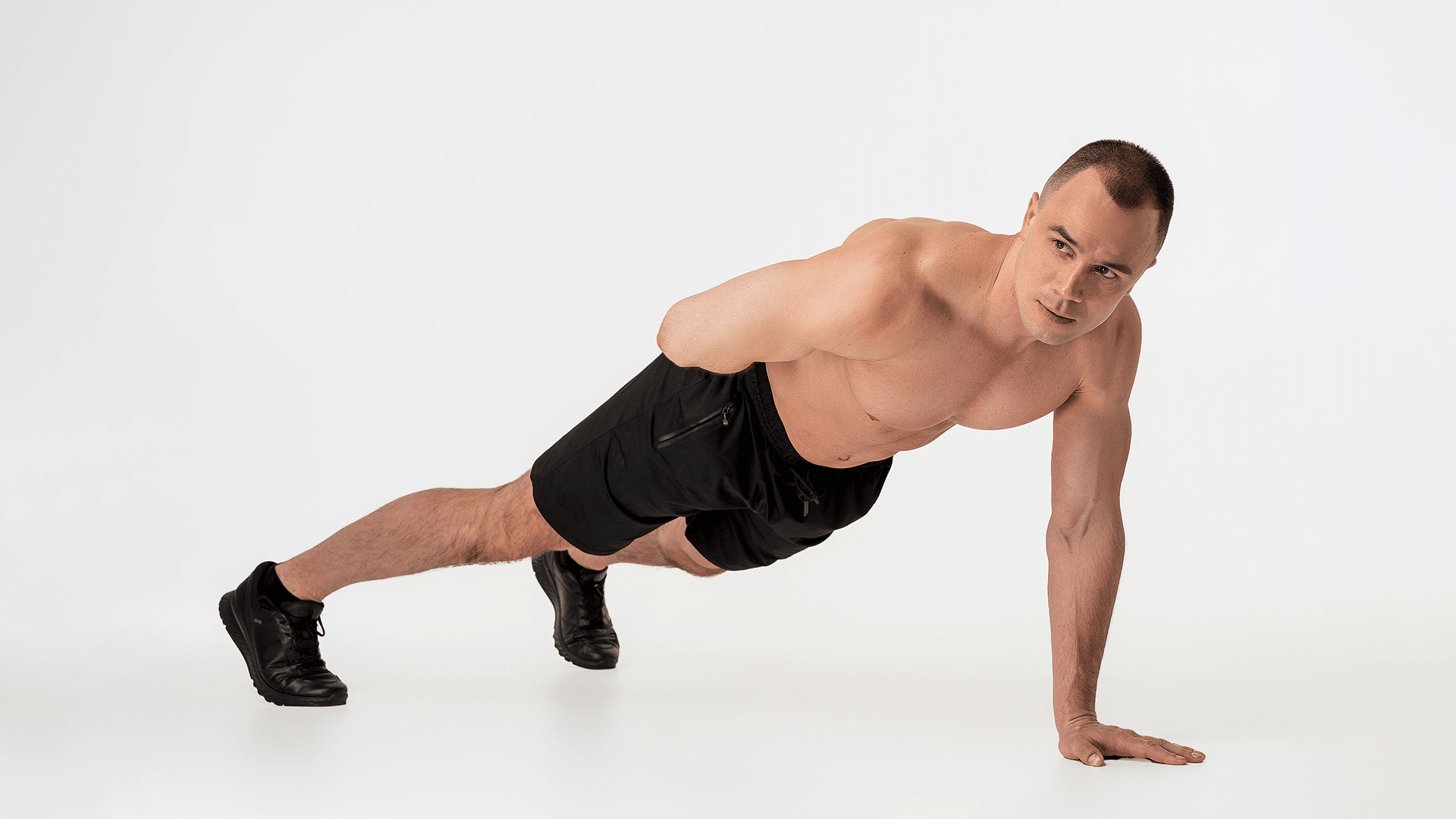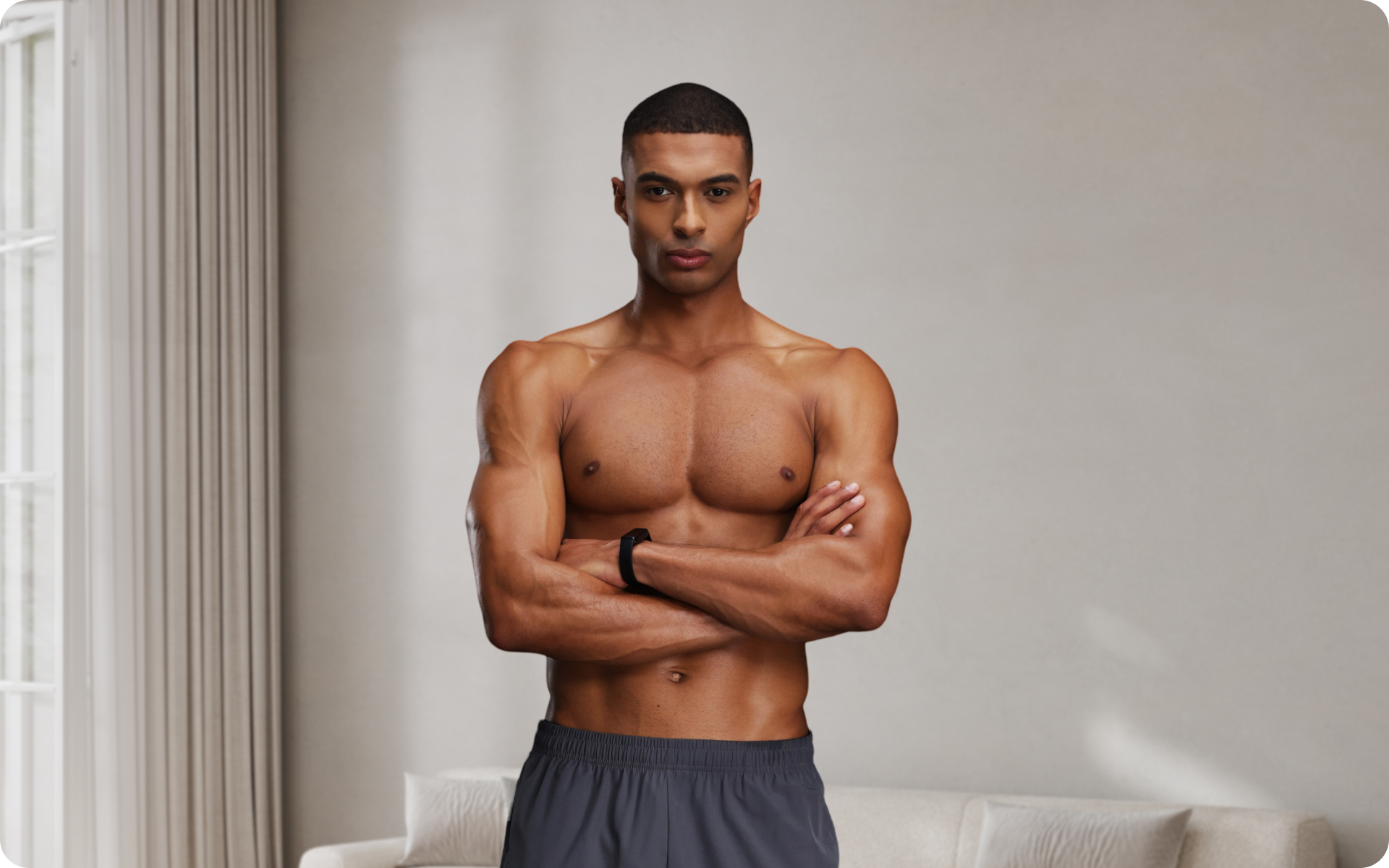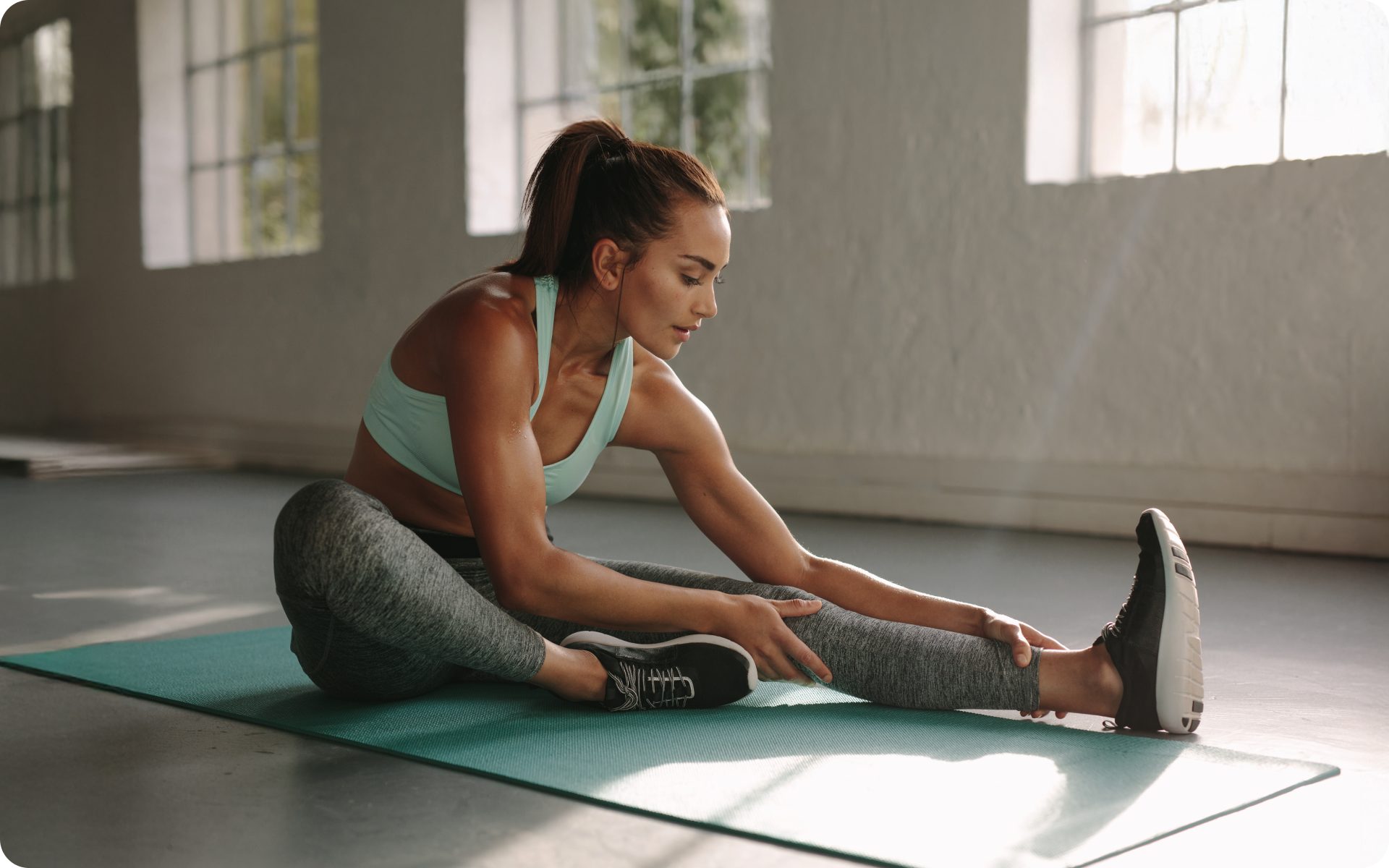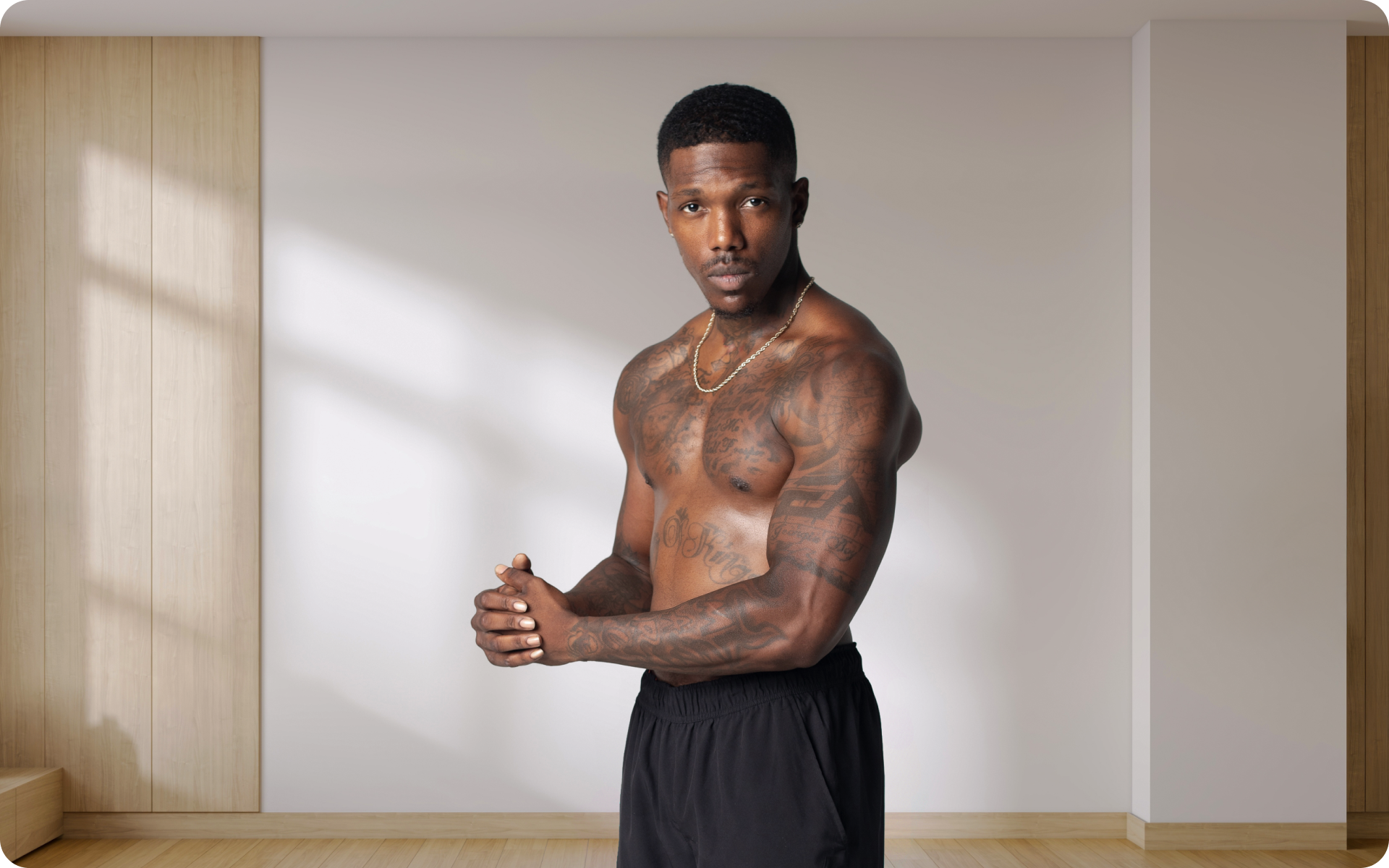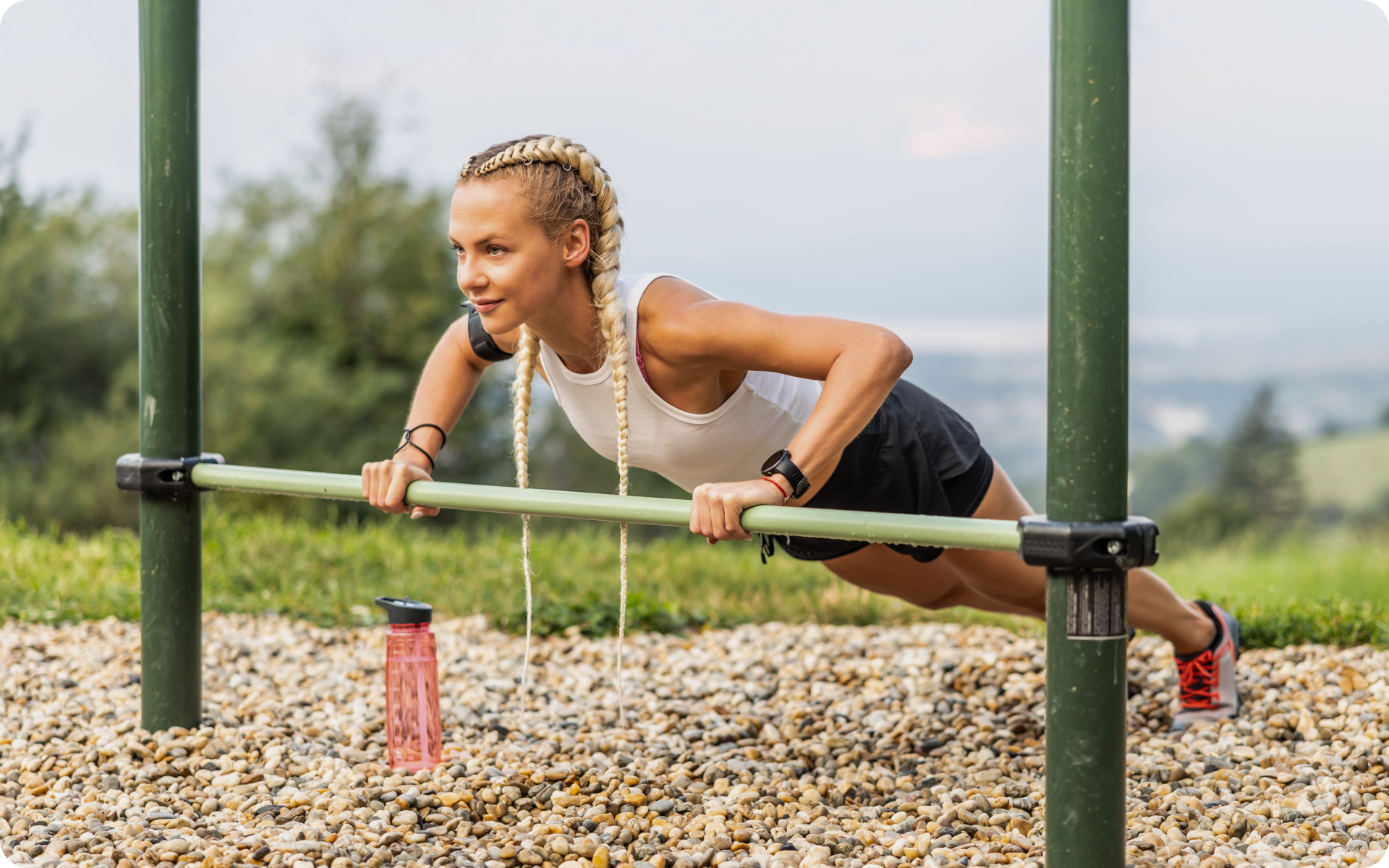When calisthenics became a trendy alternative way to workout a few years ago, it was quickly adopted by those people who, for one reason or the other, did not or could not workout in a gym. However, once the novelty passed, people found themselves wondering if it was still worth it.
Because calisthenics is a bodyweight only workout – i.e no weights are used, people often doubt whether or not it can actually help build muscles. Leg day workouts at the gym are a favorite among many – not only are they fun to do, but the resulting toned legs and rounded glutes are aesthetically pleasing.
But if you only do bodyweight exercises, can you achieve the same results? Is there a calisthenics leg workout routine that can help you build beautiful rounded glutes and tone your thighs? Read on to find out how calisthenic leg workouts can help you achieve this goal.
What Is A Calisthenics Leg Workout?
As the name suggests, this is a bodyweight only lower body workout that aims to help tone the legs and in some cases also round and lift the glutes.
Unlike regular gym workouts where you may use weight machines or free weights like kettlebells, dumbbells, or barbells to increase the resistance, in calisthenics all you need is your body weight.
While you may use small equipment like a box or bench to assist with the workout, no weights or fancy machinery is needed.
BetterMe is your fast-track ticket to a long-lasting weight loss! Tailor your fitness journey and maximize your results with just a couple of swipes!
Can You Build Legs With Calisthenics?
Yes, you can. Building muscle mass and strength is possible with bodyweight workouts, something that has been proven as true by several studies.
- In a study published in the Polish Journal of Sport and Tourism in 2015, researchers found that bodyweight exercises helped increase the explosive strength of the lower extremities (16).
- In another study done on patients with chronic stroke, researchers found that in some cases, bodyweight exercises caused more muscle activity in the lower limbs of the patients than machine assisted workouts (6).
- In a study done on older adults, researchers found that doing bodyweight workouts without using external weight helped improve the lower limb muscle force and power in the seniors (3).
- A study published in the Physiology & Behavior journal stated that muscle growth can occur independent of an external load – meaning your muscles can grow even when not using extra weights in your workout (15).
- A study looking at the effects of low-load bench press and bodyweight push-ups on muscle hypertrophy and strength found that both exercise options were comparably effective for muscle and strength gain (8).
- In a more recent study published in Nature, researchers continued to find that bodyweight workouts are fantastic in building muscle mass.
This study took thirteen sedentary young women and divided them into 2 groups: a progressive bodyweight training group and barbell back squat group. Both groups underwent two training sessions per week for 6 weeks.
At the end of the 6 weeks, researchers found that all of the women showed significant increases in muscle thickness and muscle strength with no significant differences – i.e the muscle hypertrophy and strength were generally the same regardless of workouts used to achieve the results (4).
From the evidence shown by the above studies we can see that you can use a calisthenics leg workout for mass, to not only make your leg muscles bigger, but also stronger.
Is It Hard To Build Legs With Calisthenics?
As evidenced above, no it is not hard to build your legs with calisthenics leg training. When it comes to building muscle, there are only two basics that you need to know and adhere to. These are:
- Resistance training – Physical exercises that increase muscle mass and strength by making your muscles work against a weight or force. Also known as strength training, it can be done using free weights, weight machines, resistance bands and your own body weight against gravity.
- A high protein intake – Protein is an essential macronutrient required for the maintenance of optimal health during normal growth and aging. Aside from this it is also the main building block for muscle, as it is made up of amino acids that are vital to muscle growth, strength, and recovery (2).
Whenever you workout, you damage the muscle fibers in your body. Resting and eating enough protein helps the body repair and build these damaged fibers back up. After the muscle is repaired, it is a little bigger and stronger.
A consistent cycle of exercise, rest and adequate protein in your diet helps make the muscles larger and stronger over time. If you want to gain the most from your at home calisthenics leg workout, make sure that not only are you doing the exercises as required, but also consuming at least 1.6 g per kg of body weight per day (13). Always consult a physician or dietitian before beginning a new diet.
Read more: Thigh Workout Guide: 7 Effective Exercises for Building Leg Strength
How Do You Train Legs With Bodyweight Exercises?
The best way to do this is via a good calisthenics leg workout routine. However, knowing about the exercises is not all there is to this. For you to not only tone your legs, but also make them bigger, you must implement the principle of progressive overload.
For those not familiar with this term, progressive overload is a method of strength training that advocates the gradual increase of intensity and load of your workouts, which in turn forces the body to constantly adapt to new stress.
Doing this not only keeps the workout fresh and challenging, but it also helps you build more strength, explosive power, and endurance. It also prevents the dreaded plateau (11).
When using weights, progressive overload will simply mean gradually increasing the weights you are using during your workout. But how can you use this same principle in a calisthenic leg workout or even for upper body calisthenic shoulder exercises?
Here’s how
- Increase resistance – While you are not allowed to have weights in your calisthenic workout, resistance bands are allowed. You can make a tougher workout by increasing resistance, thus making your muscles work harder.
- Increase the number of reps – Most workouts often call for an average of 8 to 12 repetitions per exercise. Beginner workouts can even call for as little as 5 to 8 to help you acclimate to the workout. Try increasing your reps per exercise by 3 to 5 more reps.
- Slow down when doing your reps – Most workout guides will ask you to do your exercises in a slow controlled manner. While doing your workout fast helps you finish your workout quicker and is great cardio, it doesn’t work the muscle as much. Instead of rushing through the workout, do each rep slower. You may notice that your muscles will ache even more, which only means that the muscle in question is working harder and may help with the gains.
- Increase training frequency – Instead of doing your calisthenics workout for beginners routine just once a week, try doing it twice a week. The more you work a muscle, the more it breaks down, grows bigger and gets stronger.
- Modify exercise difficulty – Beginner calisthenics will always have exercises specifically tailored for those who have never workout before. After a while of doing these exercises, your body gets used to them and you don’t see results as fast as you did. To prevent this, modify the easy exercises to their more challenging versions. Move up from beginner to intermediate level or intermediate to advance and later to expert moves. This may include more plyometric focused exercises.
- Increase duration of your workout – This can be done through slower workouts, increased reps or increased sets per workout.
If you’ve mustered up the courage to crush your weight loss goal, let Betterme take the sting out of this demanding process. Our app will help you restructure your habits, remold your life and crank up your fitness results!
Can We Train Legs Everyday?
No, we cannot. While increasing the frequency of muscle training can and will help with increased muscle mass and strength, overdoing it will lead to the opposite effects.
According to a study published in the Sports Medicine journal in 2016, you can train a specific muscle group at most twice a week. While others may choose to train said muscle group up to 3 times a week, two days was found to provide the best results for muscle hypertrophy (5).
Which Are The Best Leg Calisthenics Exercises?
If this is your intro to calisthenics, then it is best to start with some simple lower body exercises. Some of the best at home no equipment calisthenics leg exercises that increase the leg and glutes gains include:
- Bodyweight squats – They work the gluteus muscles, quadriceps, hamstrings, adductor, hip flexors and the calves. Aside from the basic bodyweight squat, you can also add variations such as split squats, jump and frog squats.
These are simple enough variations that can be done by both beginners and intermediate exercisers to prevent their routines from getting too boring.
Variations such as the Bulgarian, plie and pistol squat are great for calisthenics but they are not beginner friendly. You may not have enough balance to successfully complete them as a beginner, but there is no harm in trying. Use a wall or other stable object to hold onto for balance to safely try these exercises if you are uncertain of your abilities.
- Forward and reverse lunges – Lunges primarily work the gluteus maximus, hamstrings, quadriceps, and gastrocnemius/soleus (calves). They also target the core muscles albeit not as directly.
Other lunge variations you can add to your at home calisthenics leg day workout include curtsy lunges, pulse lunges, lateral lunges, overhead lunges, jump lunges and walking lunges.
- Calf raises – Like the name suggests, this is primarily a calf exercise. If you want shapely calves, this is the calisthenics leg exercise to rock.
- Wall sits – Ever tried planks for core strength? Wall sits, like planks, are an isometric exercise and can help strengthen your lower body. This exercise works your quads, glutes, hamstrings, calves, core and inner thigh muscles.
It’s perfect for improving not only the strength of these muscles – thus boosting endurance, but also improving your stability which prevents falls and injury. Start with a 1 minute wall sit (at 10 or 15 seconds intervals) and work your way up from there.
- Glute Bridges – As the name suggests, this is a primarily glute exercise. However, it also targets your hamstrings, as well as the muscles in your core and lower back.
- Resistance band leg curls – This can be done either while standing, sitting or while lying down.
- Glute kickbacks – Can be done with your bodyweight alone or with the assistance of a long and stretchy resistance band. They primarily work the glutes but they also have some effect on the hamstrings, calves, and core.
- Box jumps – This is fantastic exercise to add to your calisthenics leg workout routine, as it works the quadriceps, calves, hamstrings, glutes, abductors, adductors, and your core.
Can Calisthenics Build Glutes?
Yes, it can. Actually the above mentioned exercises for a calisthenic leg workout help build your glutes. You can also add exercises like the fire hydrant, donkey kicks and hip extensions to target your glutes even more.
Is Calisthenics A Muscular Strength Exercise?
Yes, it is. Muscular strength exercises are also known as strength/weight/resistance training or exercise. They are workouts done to help increase your physical strength through the use of weight machines, exercise bands, hand-held weights, or your own body weight (9).
Read more: Fire Up Your Muscles With Effective Resistance Bands Leg Workout
What Is The Calisthenics Body Type?
People who do calisthenics tend to achieve a lean athletic physique. They do not end up being/looking as bulky as bodybuilders do.
Yes, it is. Doing bodyweight exercises is enough to help keep you fit. Although combining cardio and calisthenics is a good idea too. While calisthenics is fantastic at strength training and cardiovascular fitness, it does not beat actual cardio at the latter. Yes, it does. Research over the years has shown that exercise as a whole does help increase the production of testosterone levels in the body. This effect, however, was more present in more men than women (1, 14, 12, 10, 7). Women generally experience little to no significant changes in testosterone production due to exercise. This increase in testosterone production is vital in building muscle – which is part of the reason why men build muscle faster than women, despite them doing the same workouts over the same time frame. Some sources say that the bigger and heavier the legs, the heavier some calisthenics moves become. This can be true based on the person’s starting strength and body weight. As calisthenics is a body weight style of exercise, a person with a higher body weight will be required to move against a higher resistance for each exercise. With time each person will adapt to their body weight in calisthenics exercises. It depends on your definition of big. If you mean as big as bodybuilders then the answer is no. However, if your goal is to be lean, with the muscle definition of athletes then yes – calisthenics will help you look like this.FAQs
Is Calisthenics Enough To Stay Fit?
Does Calisthenics Increase Testosterone?
Do Big Legs Affect Calisthenics?
Can You Look Big With Calisthenics?
The Bottom Line
A calisthenic leg workout for mass and strength is the best option for anyone who either does not want to go to the gym or simply prefers bodyweight workouts, but also wants bigger, more toned and stronger legs. If this is your goal, start slow. There is no shame in doing beginner workouts – they are the best foundation for more advanced workouts.
DISCLAIMER:
This article is intended for general informational purposes only and does not serve to address individual circumstances. It is not a substitute for professional advice or help and should not be relied on for making any kind of decision-making. Any action taken as a direct or indirect result of the information in this article is entirely at your own risk and is your sole responsibility.
BetterMe, its content staff, and its medical advisors accept no responsibility for inaccuracies, errors, misstatements, inconsistencies, or omissions and specifically disclaim any liability, loss or risk, personal, professional or otherwise, which may be incurred as a consequence, directly or indirectly, of the use and/or application of any content.
You should always seek the advice of your physician or other qualified health provider with any questions you may have regarding a medical condition or your specific situation. Never disregard professional medical advice or delay seeking it because of BetterMe content. If you suspect or think you may have a medical emergency, call your doctor.
SOURCES
- Comparison of serum testosterone and androstenedione responses to weight lifting in men and women (1983, link.springer.com)
- Dietary Protein and Muscle Mass: Translating Science to Application and Health Benefit (2019, ncbi.nlm.nih.gov)
- Effects of bodyweight-based exercise training on muscle functions of leg multi-joint movement in elderly individuals (2009, pubmed.ncbi.nlm.nih.gov)
- Effects of progressive body-weight versus barbell back squat training on strength, hypertrophy and body fat among sedentary young women (2023, nature.com)
- Effects of Resistance Training Frequency on Measures of Muscle Hypertrophy: A Systematic Review and Meta-Analysis (2016, link.springer.com)
- Electromyographic comparison of conventional machine strength training versus bodyweight exercises in patients with chronic stroke (2017, tandfonline.com)
- Increased physical activity has a greater effect than reduced energy intake on lifestyle modification-induced increases in testosterone (2016, ncbi.nlm.nih.gov)
- Low-load bench press and push-up induce similar muscle hypertrophy and strength gain (2017, sciencedirect.com)
- Muscle-strengthening Exercise Epidemiology: a New Frontier in Chronic Disease Prevention (2020, ncbi.nlm.nih.gov)
- Physically active men show better semen parameters and hormone values than sedentary men (2012, pubmed.ncbi.nlm.nih.gov)
- Progressive overload without progressing load? The effects of load or repetition progression on muscular adaptations (2022, ncbi.nlm.nih.gov)
- Serum testosterone, growth hormone, and insulin-like growth factor-1 levels, mental reaction time, and maximal aerobic exercise in sedentary and long-term physically trained elderly males (2004, pubmed.ncbi.nlm.nih.gov)
- Systematic review and meta-analysis of protein intake to support muscle mass and function in healthy adults (2022, onlinelibrary.wiley.com)
- Testosterone responses after resistance exercise in women: influence of regional fat distribution (2001, pubmed.ncbi.nlm.nih.gov)
- The acute and chronic effects of “NO LOAD” resistance training (2016, pubmed.ncbi.nlm.nih.gov)
- The Impact Of Ten Weeks Of Bodyweight Training On The Level Of Physical Fitness And Selected Parameters Of Body Composition In Women Aged 21-23 Years (2015, researchgate.net)


